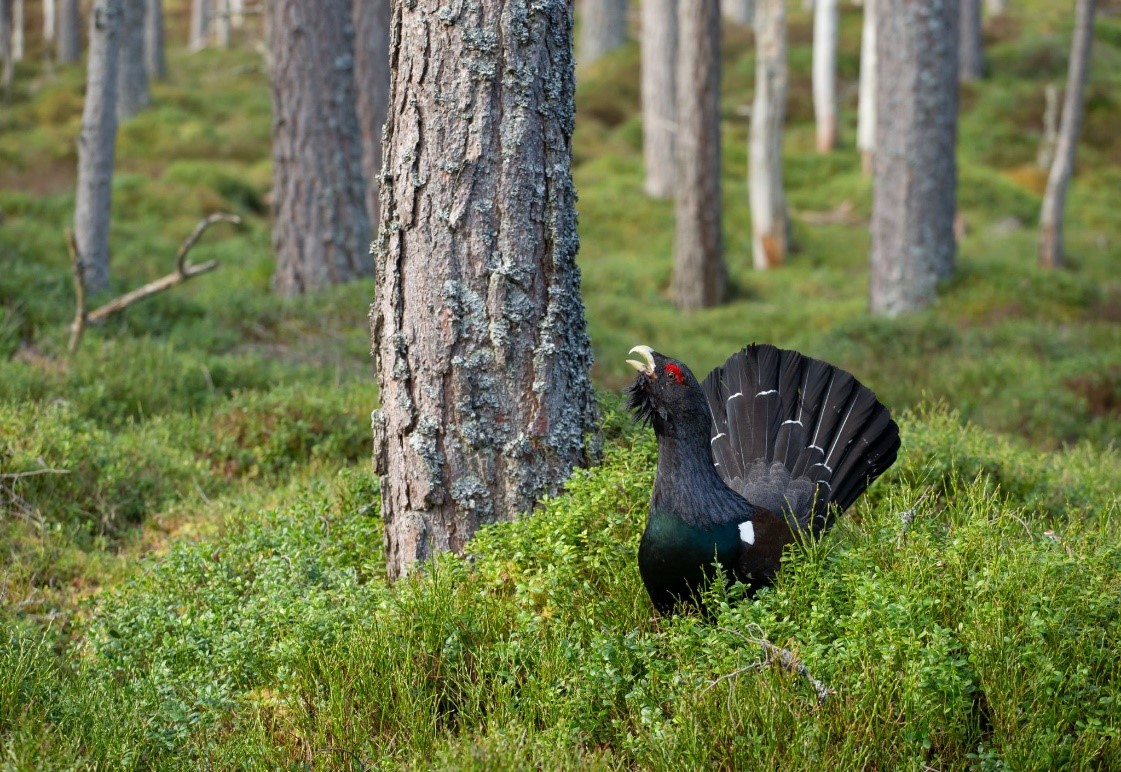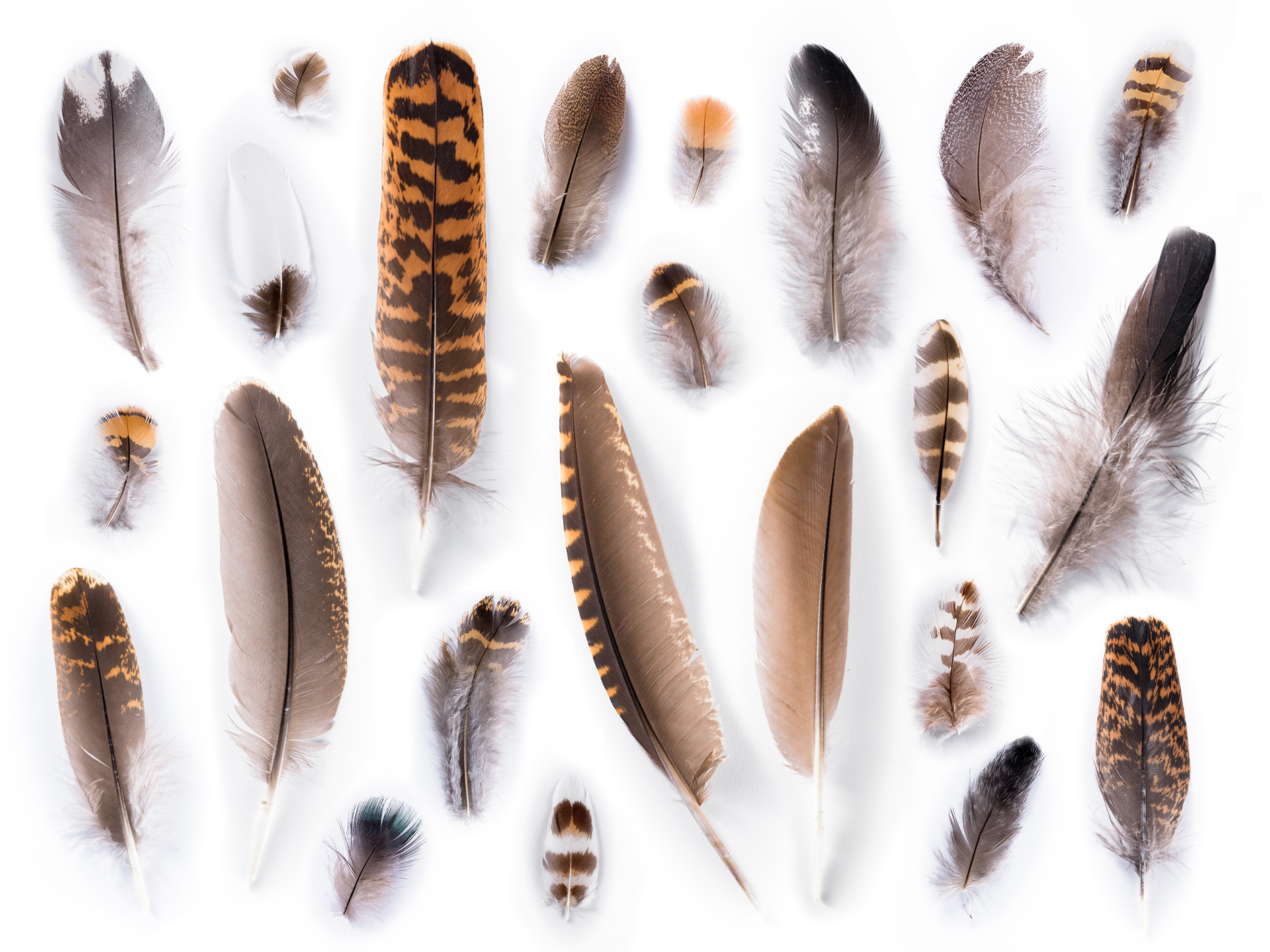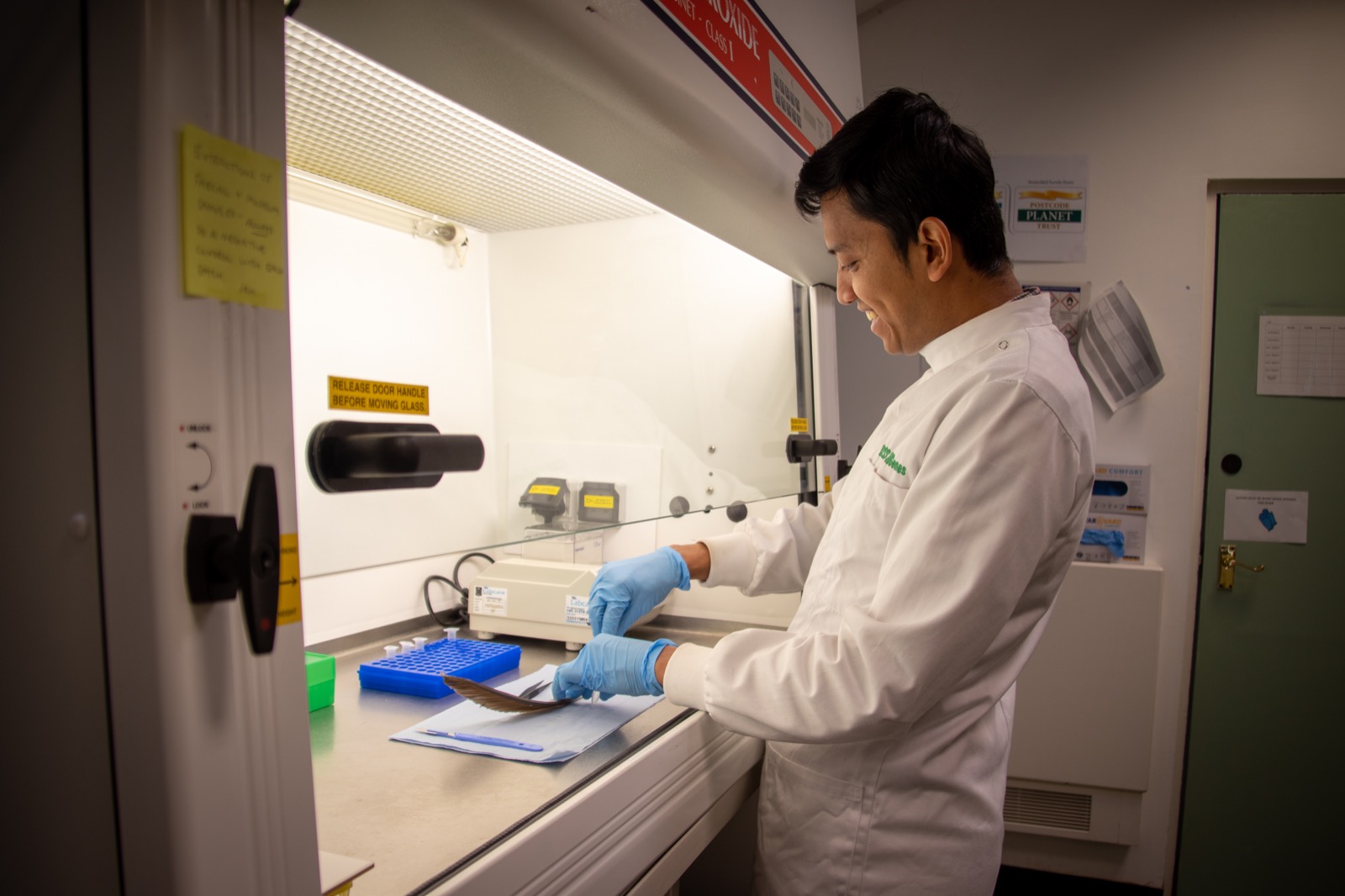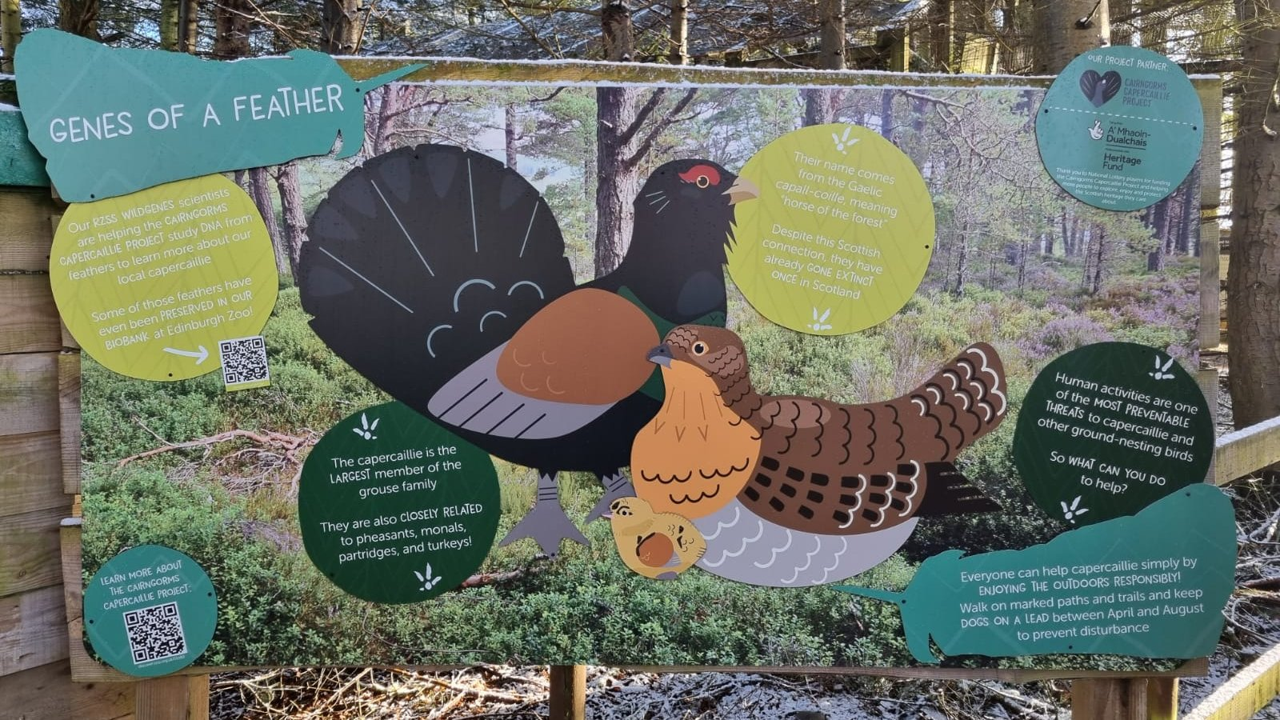The new scientific techniques saving an ancient species
28/04/2022 in Conservation
Capercaillie (Capall coille in Scots Gaelic, meaning ‘horse of the woods’) are such rare and elusive birds in the UK that few of us nowadays would be lucky enough to see one. In this guest blog by Jocasta Mann, communications officer at the Cairngorms Capercaillie Project, find out more about the largest grouse in the world and discover how the Cairngorms Capercaillie Project is working with a wide range of partners, including scientists at RZSS WildGenes, to improve the long-term fortune of this iconic Scottish species.
A bird of the old world, capercaillie roamed our forests as far back as the last ice age and have a global range that spans across Europe, Scandinavia and Russia. They are known for their remarkable lekking (mating) displays and striking feathers. Every spring, to win the approval of the females, male capercaillie will display in pine forests, tails fanned, and fill the air with the sounds of their unusual calls and fluttering jumps.

In the 1970s the UK was home to around 20,000 capercaillie. Now only found in Scotland, with over 80% of them in the Cairngorms National Park, both their numbers and geographical range have reduced drastically. In the last five decades we've lost the equivalent of one capercaillie every single day and now fewer than 1,000 may be left - making this bird one of Britain’s most vulnerable species.
There are several reasons for the decline of capercaillie. The main cause being their ability to breed and raise chicks successfully, due to factors including predation and human disturbance, which can lead to nests or young being abandoned. Capercaillie also need specific conditions to thrive, and their main habitats, large areas of Scots pine forest, have become fragmented and sparse. Their declining population also means they are at risk of a genetic bottleneck.
To secure the future of capercaillie in the UK, action needs to be taken in their last stronghold - the Cairngorms National Park. In response, the Cairngorms Capercaillie Project was launched in 2018, led by the Cairngorms National Park Authority and funded by the National Lottery Heritage Fund. With collaboration at its core, the project has 13 partners ranging from land managers and wildlife charities to local interest groups, who have all been working hard to deliver key actions, which include supporting local communities to deliver their own solutions to help capercaillie, raising awareness, researching genetic diversity, improving habitat, and finding more robust ways to monitor capercaillie.

It’s been a big year for the project. Communities in the National Park, from local villages to mountain biking groups, have come together with a shared ambition to protect capercaillie. They’ve been trialling signage in capercaillie forests to raise awareness and reduce disturbance, building action plans and using technology, such as mapping and flagging mountain bike trails that run close to capercaillie areas. Volunteers have been getting involved, alongside land managers, to create and improve habitat for the birds - including marking deer fences to prevent collisions. Owners of small woodlands have been making use of the Capercaillie Habitat Grant Scheme to deliver ‘quick wins’ for capercaillie, like felling non-native trees to promote growth of Scots pine and marking fences.
The project is also in the middle of a new phase of capercaillie conservation – researching their genetics, both modern day and historic, to understand how to secure their future. Last year, over 1,000 capercaillie feathers were gathered from the Cairngorms and the DNA was extracted from the feathers in the RZSS WildGenes lab at Edinburgh Zoo. The project is working with the RZSS WildGenes lab to complete a scientific study of this capercaillie DNA and uncover the genetic diversity of the birds in Scotland. Comparing this with other populations across Europe will provide information that will help inform future management. Find out more about that story here.

The science doesn’t stop there - RZSS are also working with the project on a new way to monitor the size of the capercaillie population in the UK using capercaillie droppings. Currently, capercaillie are monitored by surveyors who visit leks (capercaillie breeding sites) in the spring to count the number of birds they can see. Genetic lek surveys allow us to count the number of birds present by analysing the droppings they leave behind. The analysis of these droppings could provide a much more accurate account of how many birds were at the lek site and reduce any disturbance caused as droppings can be collected once birds have dispersed. The first phase of work on this new method is complete and the next phase will begin this spring when droppings will be collected, analysed and the results compared against the number of birds seen.
Both the project and RZSS WildGenes are hoping this new technique will help us protect this ancient species. Watch this space for news…

You can find out more about our work with the Cairngorms Capercaillie Project online and on this interpretation board during your next visit to Highland Wildlife Park!
Featured Articles

An update from the Budongo Forest
19/04/2024 in Conservation

Edinburgh Zoo named best zoo in Scotland
15/04/2024 in Edinburgh Zoo

























Follow EZ